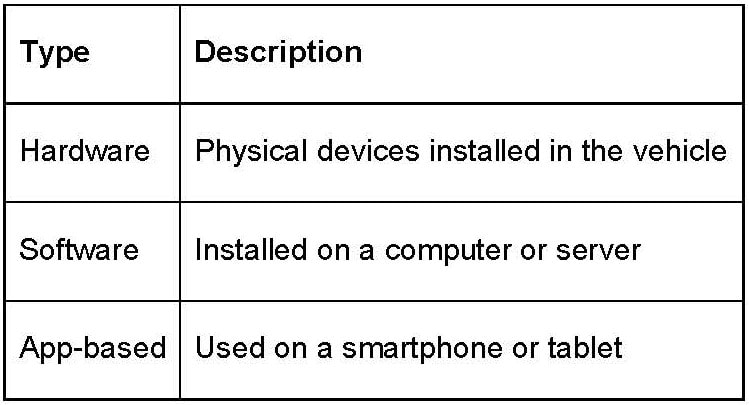[ad_1]
Featured image by cottonbro studio via Pexels
In this post we look at various eCommerce business models. Use this as a guide as you plan your startup.
RELATED ARTICLE: 6 KEY RESPONSIBILITIES OF AN ECOMMERCE OPERATIONS MANAGER
While the digital era is a treasure chest of opportunity, with eCommerce being the shining jewel, navigating this vibrant jumble can be treacherous for startup owners. In fact, one in five startups crumbles within a year, highlighting the need for strategic decisions from the get-go.
The most crucial first step? Choosing the right business model for your eCommerce business. This foundational selection defines your trajectory, dictating how you’ll connect with customers, manage products, and ultimately, carve your niche in the online marketplace.
Dazzling models abound, but where to begin? Let’s explore some popular eCommerce paths, each with its charm and hurdles, to help you find your perfect fit.
Business-to-Consumer Model: Fastest Lane
The business-to-consumer (B2C) model, which represents the most prevalent form in the eCommerce space, focuses on selling products or services directly to the end consumer. For startups looking to venture into this domain, it’s vital to implement dynamic pricing strategies.
An essential tool in this regard is a currency conversion API. This tool facilitates automatic pricing adjustments in different currencies, making the products accessible and appealing to a global audience.
Direct-to-Consumer: The Brand Is Boss
Imagine steering the wheel of your brand, with every aspect of the customer journey entrusted to you, from awareness to purchase. That’s the essence of the direct-to-consumer (D2C) eCommerce business model. You, the pioneering startup, stand as the sole proprietor. You cut out the middlemen and cultivate a direct relationship with your audience.
The rewards are undeniable: boosted profit margins, a solidified brand identity, and unparalleled control over the customer experience. However, remember, building brand awareness, navigating logistics, and attracting customers become your sole responsibility.
Marketplace Model: A Hive of Activity
Collaboration takes center stage in the bustling marketplace model. This model transforms your platform into a vibrant hub where sellers and buyers converge. Imagine an intoxicating diversity of products, a constant hum of activity, as well as the potential to attract a loyal, diverse customer base.
The allure is undeniable: lower startup costs, a pre-existing product portfolio, and the magnetic pull of vast choice drawing in significant traffic. However, managing commission structures, ensuring product quality across diverse vendors, and resolving disputes demand a certain diplomatic finesse with this eCommerce business model.
Subscription Model: Recurring Revenue, Rewarding Relationships
Picture a fortress of predictable income built upon the recurring deliveries or service access. This is what defines the subscription model. This eCommerce business model fosters unwavering customer loyalty while also generating a steady stream of revenue.
You’ll have invaluable insights from engaged subscribers, harnessing the power of recurring transactions, all while cultivating a dedicated community around your brand, within the walls of the subscription model. However, the challenges lie in acquiring those initial subscribers, ensuring recurring value keeps them hooked. Moreover, you will need to constantly be innovating to maintain your edge.
Dropshipping: Light and Lean, But Not Lacking
For the minimalist startup, dropshipping unveils an intriguing proposition: selling products without ever holding a single item in your inventory. With this eCommerce business model, you partner with a supplier who shoulders the burden of warehousing and shipping. This allows you to focus specifically on marketing and customer engagement.
The benefits are obviously clear: minimal upfront investment, effortless scalability, and the freedom to experiment with your product offerings. However, be prepared to relinquish some control over quality and shipping times, all while building your success upon the foundation of another company’s infrastructure.
Hybrid Model: A Masterpiece of Versatility
Not every startup fits neatly into a single box. Thus the hybrid business model for eCommerce embraces the fluidity of combining elements from different approaches, tailor-made to your unique vision. So, envision a unique blend: curated D2C products alongside a complementary marketplace, all woven together by a subscription box offering exclusive content.
This hybrid model grants you unparalleled flexibility, allowing you to cater to diverse customer needs, diversify your revenue streams, and adapt seamlessly to the ever-changing market landscape. However, remember, complexity is the price of agility. Therefore, you’ll need to masterfully juggle different fulfillment processes and ensure a seamless experience across all your offerings.
Selecting the Perfect Fit: A Matter of Matchmaking
Choosing the right business model for your eCommerce store isn’t about blindly following trends. It’s a deliberate mix of introspection, analyzing your product, target audience, budget, and resources. So ask yourself: What are you passionate about selling? Who are you hoping to reach? What resources can you realistically dedicate? Can you handle the operational complexities of your chosen model?
Remember, your business model should be a roadmap for growth, not a rigid cage. Look for options that offer scalability, allowing you to adapt and expand as your startup gains momentum.
Customer Centricity: The Golden Thread
No matter which model you choose, never lose sight of the central star of the eCommerce universe: the customer. Every decision, from platform design to the checkout process, should be woven with customer value in mind. Accordingly, aim for a frictionless buying experience, one that removes obstacles and offers delights at every turn.
RELATED ARTICLE: TIPS FOR IMPECCABLE ECOMMERCE CUSTOMER SERVICE
Remember, loyalty thrives on positive interactions, so prioritize clear communication, prompt resolution of issues, and a personalized touch that makes your customers feel valued and understood.

Image by Karolina Grabowska via Pexels
Final Thoughts
Choosing the right eCommerce business model is a critical decision for startups, one that influences their future trajectory. By understanding the different models available, assessing their alignment with market needs and internal capabilities, and implementing them effectively, startups can set themselves up for success.
RELATED ARTICLE: TOP 5 REASONS WHY YOU SHOULD START AN ECOMMERCE WEBSITE
Are you thinking of starting—or do you currently operate—an ecommerce business? Then be sure to follow the Business Opportunities blog, where you will pick up the most useful tips and tricks from other ecommerce business owners. Learning from other business owners truly is the best way to create your own success!
[ad_2]
Source link



